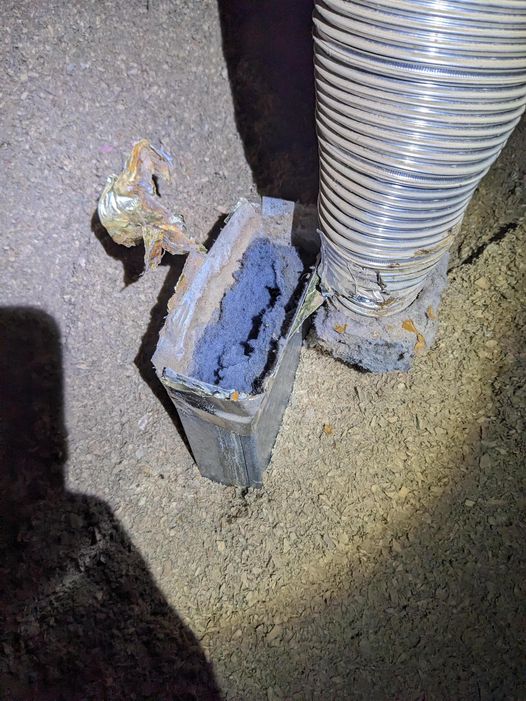Why do people deceive others about the condition of appliances, causing unnecessary problems and inconvenience?
10 months ago
Last Updated: August 15, 2024
I’m so happy we ended up with the “fancy” dryer (which was actually the only option at the store and we needed one quickly) because it has error notifications and alerted us to a clog. We vented it into the room and it worked perfectly, confirming that the duct needed some attention. Turns out it vents through the attic to the roof in our new home. My husband climbed up there today to take a look. We’re heading out to buy a box adapter and a shop vac to clear out thirty years worth of lint from our trusty wrangler. Feeling thankful today! It’s frustrating how dishonest people can be, knowing about so many issues and not disclosing them. 😭

Smooth 4” pipe only, with taped seams and no screws, keep it to a maximum of 30ft – remember, each elbow counts as 5ft. Make sure to direct vent to the exterior. These are the recommended practices for dryer venting.
Haha yes, we definitely kept it. The issue seems to be the lack of a stack boot as it is just taped onto the square portion behind the wall. Just so you know, this vents to the roof. What a mess, but we are addressing it.
The only thing I would have included is insulting the steel pipe. Keeping the dry air hot on the outside reduces the risk of condensation inside the pipe and prevents dry lint from sticking to the walls, causing a blockage. In my area, using aluminum or plastic flex pipe is not allowed.
Do you think this should not have passed inspection in Arizona?
Hey, not sure about Arizona, but you can check the International Residential Code (IRC) for more information on this.
Yeah, I agree with James. It’s important to insulate pipes entering unconditioned spaces to prevent condensation, including bathroom vents.
Hey there! Just to let you know, building codes are pretty much the same everywhere now. It’s best to use solid steel pipe and foil tape for dryer vents. Some retailers may still sell products that aren’t safe, so be cautious. Aluminum and flex pipe used to be okay, but it’s not the case anymore due to fire risks, especially with gas dryers. In my area, only solid steel is allowed. Remember, building codes are the minimum requirement, so you can always opt for better materials and practices. If it were me, I’d switch to steel pipe and insulate it, especially if it goes through unconditioned spaces like the attic. Also, consider running the vent out a wall for a shorter pipe length, which is easier to clean and less likely to clog. Good luck!
Well, , they’re technically the minimum requirements, but considering it was built in 1990, nothing really meets the standards here. It seems like a 6×2 stack boot is needed for a proper transition… The vents are all 10 inches now, but we’re not going to tear down the entire wall to fix that. There’s no other place to vent it to since it’s located in the middle of the house.
If there’s a silver lining to the story, now you know where to check and how to unclog it when it happens again. But yeah, the previous comment is right – I’m a builder too and ribbed vent pipes are not permitted in modern buildings.
The house was built in 1990 by
Wrangler lint 😆
We were the initial residents in this place who don’t own any horses, haha
Here’s the kicker… he wouldn’t even give us appliances. It was pretty obvious that his dryer wasn’t working, haha
I decided to attach a leaf blower to ours every few months, just for fun
I can’t include these in my new construction projects because the ribs slow down airflow and lead to rapid lint buildup. You can save the extra lint for campfires or a wood stove since it’s a great fire starter and highly flammable!
Hey, so it’s a house that was built back in 1990. Some ventilation goes up
It was such a popular trend back in the 90s
I was trying to say UP through the attic. The vent is located on the roof. Still silly, though
Ventless dryers are much more efficient
That wouldn’t work for a steam dryer and with the amount of laundry I have to do. Not a good idea.
It really depends on where you’re located, but normally those ventless dryers add way too much moisture back into your home! It’s best to keep the lint screen on the dryer clean, avoid using flexible ducts like the ones in the picture (I’m tired of seeing that used in straight runs!), and make sure to maintain the duct regularly to avoid issues like what we’re seeing here.
Hey, when I was living in the states, that was always a hassle. In my current setup, I have a basic bathroom exhaust fan to get rid of moisture during drying, which is pretty common around here.
By the way, dryer lint works really well as a fire starter. 🙂